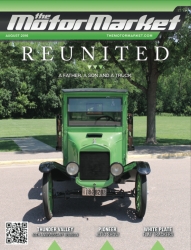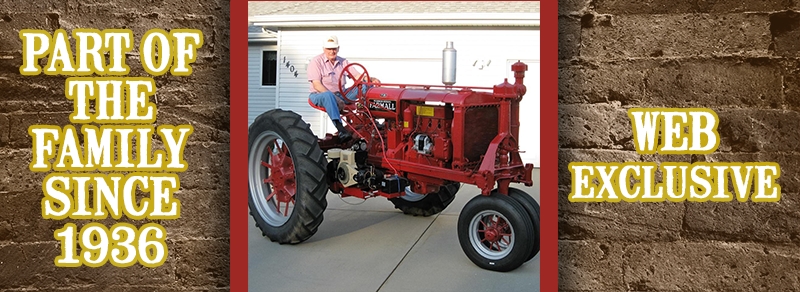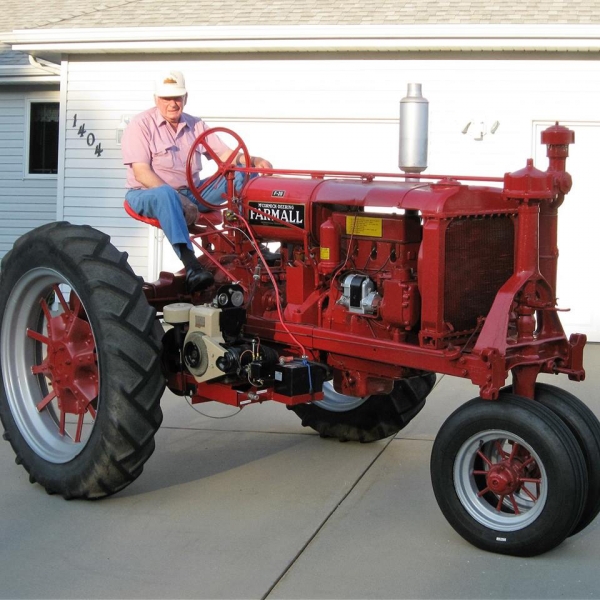More Issues
- August 2023
- July 2023
- June 2023
- May 2023
- April 2023
- March 2023
- February 2023
- January 2023
- December 2022
- November 2022
- October 2022
- September 2022
- August 2022
- July 2022
- June 2022
- May 2022
- April 2022
- March 2022
- February 2022
- January 2022
- December 2021
- November 2021
- October 2021
- September 2021
- August 2021
- July 2021
- June 2021
- May 2021
- April 2021
- March 2021
- February 2021
- January 2021
- December 2020
- November 2020
- October 2020
- September 2020
- August 2020
- July 2020
- May 2020
- April 2020
- March 2020
- February 2020
- January 2020
- December 2019
- November 2019
- October 2019
- September 2019
- August 2019
- July 2019
- June 2019
- May 2019
- April 2019
- March 2019
- February 2019
- January 2019
- December 2018
- November 2018
- October 2018
- September 2018
- August 2018
- July 2018
- June 2018
- May 2018
- April 2018
- March 2018
- February 2018
- January 2018
- August 2011
Part Of The Family Since 1936
Web Exclusive|
By Monte Heitzman In 1936, Grandpa Albert traded a Farmall Regular for a brand new Deering McCormik Farmall F20. MSRP in 1936 was $1000.00; Albert paid $600.00 and his trade. The tractor was billed as the “Increased-Power Farmall”. The tractor was originally gray with black lettering, and had steel wheels. However, on November 1st, 1936, Farmall changed the color to red with black lettering. Grandpa purchased the F20 in the original gray color, but he wanted it to look like it was brand new, so it was painted red in Ethan, SD. No one remembers when the steel wheels made their way to the junkyard, and no one thought to save them.
The F20 was a workhorse on the family farm for years. She had 26.67 hp coming from the power take-off (PTO) and 20.66 hp at the drawbar. Dad remembers pulling a three- bottom plow with 14” moldboard plowshares, a cultivator, a two-row corn picker, manure spreaders, wagons, and a variety of other farm equipment with this powerhouse. In later years, the F20 became less and less a part of the daily farm operation. She wasn’t powerful enough for modern farming, and the tractor had to be started with a hand crank. When I was in high school, we would use the old girl to run the grain elevator during harvest season. With 540 RPM, she could still be useful hauling grain up to the top of the grain bin, while the other tractors did their part during this very important time of year.
Dad always had a special spot in his heart for this tractor, and he held on to her when he sold all the other farm equipment in 1998. The old girl retired from farming the same time my father did. Mom and Dad moved to Mitchell, SD in 1997, and the F20 took her place in Dad’s three-stall garage. Dad would never hesitate to start her up and show her off to neighbors, friends and family. Even though she was old and rusty, she ran like a top.
Over the years, Dad added a fourth stall to the garage with a wash bay. He purchased a skid steer for moving snow, and added more toys to the garage. Dad finally pulled the trigger and had some work done to the old F20. Roger Roades of Mitchell, SD fixed a leaky seal between the transmission and differential housing. He had to pull the rear wheels apart, and pull the differential from the housing to fix the leak. This was quite a procedure for this antique. Dad paid a whopping $315.00 to fix this leak. Once Roger was finished fixing the leak, Dad took the tractor to another location to be painted. Dad said “this young guy near Mt. Vernon, did that kind of work on weekends when he was home from college.” Dad decided to paint it red again, just like Grandpa did back in the ‘30s!
The hand crank was always something Dad was very careful around. He would never let us kids start the F20, because the tractor was known for kicking back and could break a wrist or an arm. Dad told me he knew people who lost their teeth because of the kick. As age took its toll on my father, he decided to try and build a starter for the tractor, so he wouldn’t have to worry about the kick anymore.
Dad always had a knack for being able to build, design, and make something out of nothing. Dad was at a sale one day and found a used Briggs and Stratton 8 hp motor. He started working on how to use that engine to help start the old Farmall. The motor cost $100.00, so Dad figured the worst thing that could happen is he would lose $100.00 and not be able to make it work. After about a year of working on it infrequently, Dad finally made a starter for his F20. He built a bracket to hold the Briggs and Stratton motor in front of the right rear wheel, then he took a belt and ran it to the pulley on the tractor. Finally, he put a pulley on the motor. Dad started the Briggs motor and climbed onto the tractor. He engaged the clutch and put the pulley in gear. When Dad released the clutch, the pulley engaged and the Briggs motor turned the engine over to start, without needing to use the hand crank. The best part about this starter is the hand crank is still operational. The starter can be removed, and the tractor is essentially unchanged from original.
Here it is, 2016, and this tractor is 80 years old. She still purrs like a kitten, and could still be used on the farm. However, she’s earned her retirement.
Earlier this year, Dad decided it was time to find a new home for the old girl. I don’t have room for it, nor do any of my siblings. Dad can’t take care of her the way she should be taken care of. So, the tractor made a trip to the sale barn. After 80 years of being in the family, she found a new home somewhere in Iowa. I hate to see more of my history slip away and disappear from my present. However, I know she will be better off in the hands of someone who will appreciate her for what she was and is.
|



